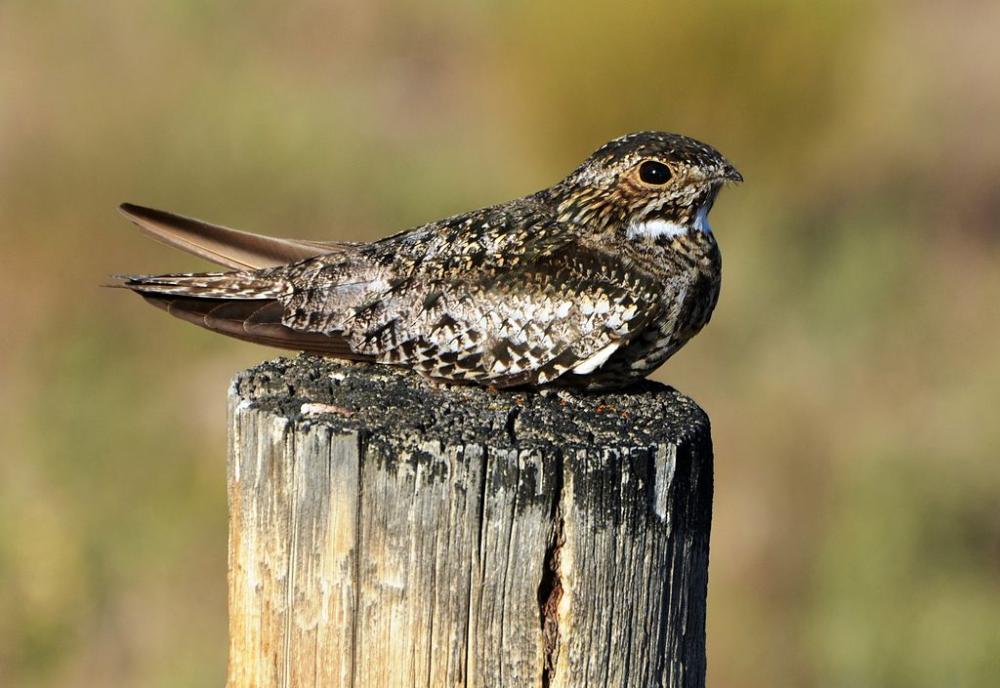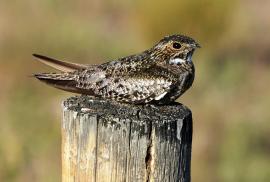Guide to Boreal Birds
Overview
This bird has moved into towns and cities, where flat roofs provide abundant nest sites, and railroad yards, vacant lots, and sports fields offer good feeding opportunities. This bird's name is somewhat inappropriate, since it is not strictly nocturnal, often flying in sunlight, and it is not a hawk, although it does hawk, catching flying insects on the wing. On its breeding grounds, the male does a power dive and then, as it swerves upward, makes a booming sound with its wings. Its capacity to consume insects is prodigious. Analysis of stomach contents has shown that in a single day one bird captured more than 500 mosquitoes and another ate 2,175 flying ants.
Description
10" (25 cm). A jay-sized bird, mottled brownish-black above and below, perfectly matching the ground. Long notched or square-tipped tail and long pointed wings with broad white wing bar. Male has white throat patch and white subterminal tail bar. Female has buffy throat patch and no tail bar. Flight high and fluttery.
Voice
A loud nasal call, peent or pee-yah, heard primarily at dusk.
Nesting
2 creamy or olive-gray, finely and densely speckled eggs laid on the ground or a roof.
Habitat
Open woodlands, clearings, or fields; towns with roosting trees or fence posts.
Range/Migration
The Common Nighthawk is a late migrant in spring, not arriving in the north until temperatures in the hours between sundown and nightfall are warm enough for flying insects to take wing. The migratory patterns of this species are difficult to assess because of the difficulty involved in distinguishing between this and other species of nighthawks that mix in parts of the winter range. One unique aspect of the migratory pattern of this species is that females usually arrive several days ahead of males.
Breeds from central Canada southward to Nova Scotia and through most of United States. Winters in tropics.



